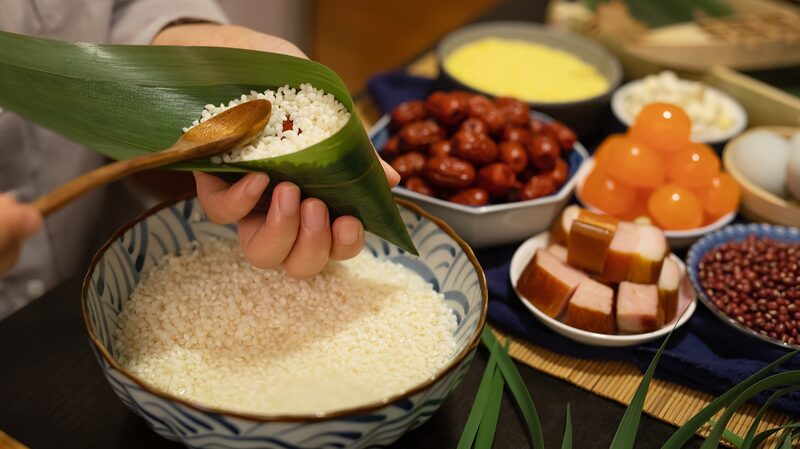Did you know that the flavor of zongzi, those delicious sticky rice dumplings wrapped in bamboo leaves, varies across China? 😋 Depending on where you are in the country, you might bite into a sweet treat filled with red bean paste, or savor a savory delight packed with pork belly and salted egg yolk. But ever wondered why these differences exist? Let's embark on a tasty journey across China to find out! 🛤️
The Dragon Boat Festival and Zongzi
First things first, let's talk about the Dragon Boat Festival, also known as Duanwu Festival. Celebrated on the fifth day of the fifth month on the Chinese lunar calendar, it's a time to honor ancestors, pray for good fortune, and ward off bad vibes. This year, it fell on June 10th.
There are many legends about the origins of Duanwu. One of the most famous stories is about Qu Yuan, a patriotic poet from the state of Chu during the Warring States period. When his homeland was invaded, he threw himself into the Miluo River. Locals tossed rice wrapped in bamboo leaves into the river to keep fish from eating his body. And thus, the tradition of eating zongzi was born!
Sweet Zongzi in the South
In southern China, where the climate is warmer and rice paddies are abundant, sweet zongzi reign supreme. Regions like Guangdong and Fujian are famous for their use of sweet fillings like red bean paste, lotus seeds, and even candied fruits. The lush environment supports a variety of crops, making sweet ingredients readily available. It's like nature's candy shop! 🍭
Savory Zongzi in the North
Head up north, and you'll find that zongzi take on a savory twist. In places like the provinces surrounding Beijing, people prefer their zongzi filled with marinated meats, mushrooms, and salted egg yolks. The cooler climate favors wheat over rice, but during the festival, sticky rice becomes a special treat. The hearty fillings reflect the need for energy in the more rugged terrain. It's comfort food at its finest! 🥟
Regional Specialties
- Jiaxing Zongzi: From the eastern province of Zhejiang, these are famous for their juicy pork filling. The pigs are raised locally, and the meat is marinated in soy sauce and spices. Talk about farm-to-table! 🐖
- Cantonese Zongzi: Down in Guangdong, you'll find zongzi filled with a mix of meats, nuts, and sometimes even a whole egg yolk. The subtropical climate means a diversity of ingredients. It's a flavor explosion! 💥
- Suzhou Zongzi: Also from the east, these are typically sweet, filled with red bean paste or jujube. The region's fertile land produces excellent grains and fruits. Sweet tooth satisfied! 🍬
Nature's Influence
So why does nature play such a big role in shaping zongzi flavors? It's all about what's available. Agricultural products vary due to climate, soil, and local traditions. Communities make use of their natural resources, leading to the diverse and delicious zongzi we enjoy today.
Bridging Cultures, One Bite at a Time
For those of us exploring Chinese culture, whether from afar or within the Asian diaspora, zongzi offer a tasty way to connect. They show how food reflects the land and the people. So next time you taste a zongzi, think about the journey it represents—from the fields of China to your plate. 🌏
Join the Feast!
Why not try making your own zongzi at home? Gather some friends, pick your favorite fillings, and wrap away. It's a fun way to celebrate and appreciate the diversity of Chinese culture. Plus, who doesn't love a good cooking party? 🎉
Reference(s):
Sweet or salty? How natural factors shape zongzi across China
cgtn.com



